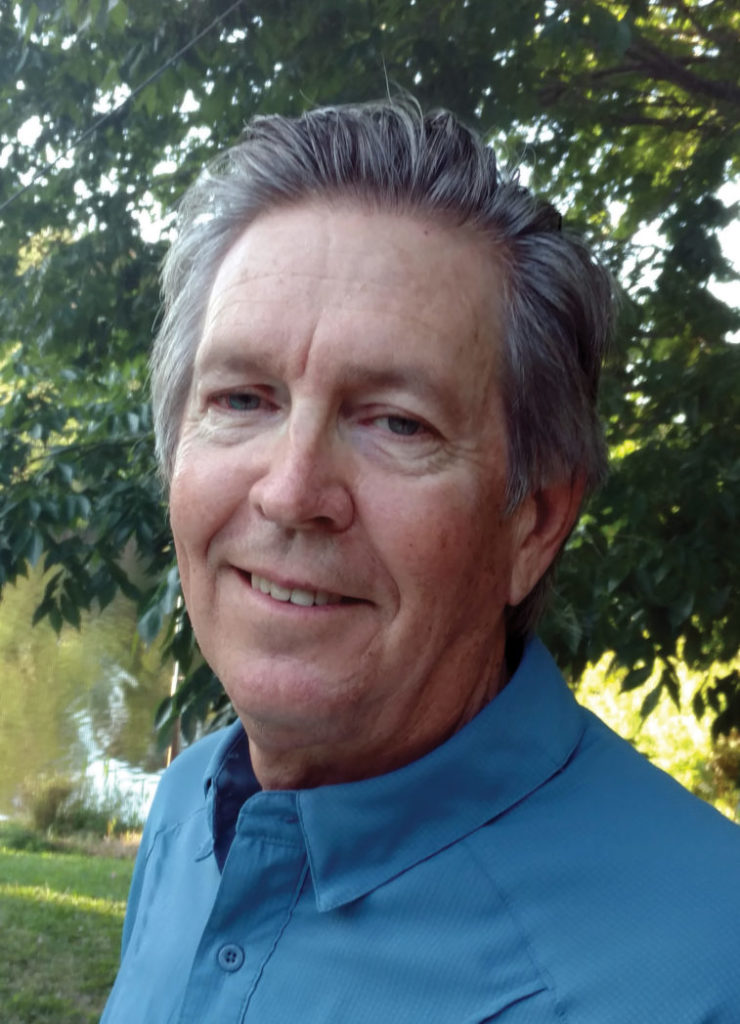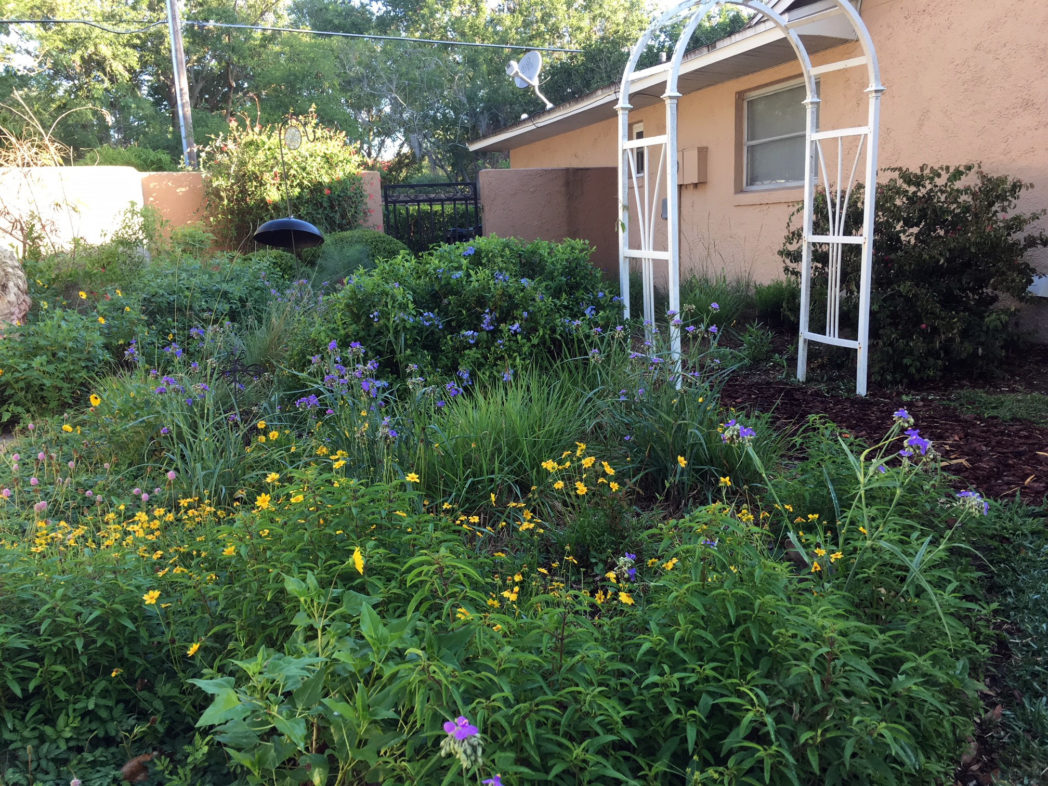How to talk to your neighbors about wildflowers
Russ Hoffman, a trained lakes manager and owner of Beautiful Ponds in Southwest Florida, has a master’s degree in psychology from Wheaton College. He will speak about “How to Talk to Your Neighbors About Native Plants” at the 2018 Florida Wildflower Symposium on Saturday, April 28. We recently spent a few minutes with him to get an overview of environmental psychology and how it can be used.
FaceBook Live: See Russ talk about how to approach your neighbors
FWF: What is environmental psychology and how can wildflower enthusiasts use it?
Russ: Environmental psychology describes how individual people change and how groups change. If we want to convince others to plant native flowers, we need to adapt our vocabulary and communication style. We need to speak their language. You love nature and wildflowers. Now improve your communication skills to encourage others to do the same. You can make a difference. You can help people embrace a more natural landscape and a more sustainable future.

FWF: Many of us try to educate people about the benefits of adding wildflowers to landscapes. Most of the time that approach fails. Why is that?
Russ: We get too technical. We strive for scientific accuracy. Next time you write an article for the community newsletter follow this format:
- Call to action. Plant more wildflowers.
- You can make a difference. Planting one milkweed will draw more butterflies into your yard.
- Others are doing it. Describe how another person or neighborhood planted wildflowers.
- Add pictures of smiling people, looking at the camera planting wildflowers. Photos of people are more persuasive than close-up images of beautiful flowers.
Handling naysayers with psychology
FWF: How can enthusiasts handle naysayers?
Russ: As tempting as it is, resist trying to convince or educate that person about anything. Your best tactic is saying, “Thank you for your comments. We’ll take those into consideration.” Then return to your message as politely and professionally as possible.
Don’t spend any time or energy fighting people like this. It’s highly unlikely they will ever change, so don’t bother trying. Focus your energy supporting and educating the people who show interest.
FWF: How many people do you need to “convince” to make a wildflower project successful?
Russ: Say you’re talking to a group. You’ll need to convince about 15 percent of them. You’ll make the most progress supporting these people. If they’ve bought into the idea of planting wildflowers, give them plenty of attention and encouragement.
FWF: What other methods can you employ to win people over?
Russ: Many people love manicured, sterile landscapes dominated by grass. Others prefer as many different wildflowers as possible. Often you can bridge that difference by adding a low decorative fence or path around a wildflower area.
You can also make wildflowers more “civilized” by planting groupings of the same flowering plant. While this is not following Mother Nature’s typical design, it appeals to people who are used to traditional ornamental flowerbeds.
Maintenance is a factor that is important to many people. Research confirms that many people like a landscape that is not natural. They want a look that reflects human activity or care. They want it to look mowed, pruned, hedged, edged, etc.
Two steps forward, one step back
FWF: What do you do when someone tries—and fails—with wildflowers and goes back to traditional non-native plants?
Russ: Two steps forward, one step back. Change, whether it’s stopping smoking or planting wildflowers, follows a pattern. Each phase of this pattern requires a different approach, different forms of support. The guiding principle is to anticipate regression. If a person replaces wildflowers with non-native plants, don’t give up. Don’t criticize them. Give them understanding and acceptance. Then in a month, encourage them to replant wildflowers.
My symposium presentation will go into detail about the steps or phases of the change cycle, so you have more tools to work more efficiently as people gradually move through the cycle of change.
FWF: What other things should we be thinking about when reaching out?
Russ: Some people see the world very differently than you do. The differences seem overwhelming. But even people who tend to be anti-nature can support a wildflower or environmental project. However, they will do it for very different reasons.
A full discussion of values isn’t possible here. But you can strive to describe your wildflower project in the “values vocabulary” of the people you don’t expect to support your cause. Carefully listen to a person describe what is important and why that is important. You may recognize one of their reasons to support your project.
This is just a tiny introduction to the principles and techniques you can use to help more people to embrace wildflowers. We can always learn to be more effective communicators. I hope readers will join us at the Symposium to learn more about reaching out to people who usually don’t support environmental causes.

